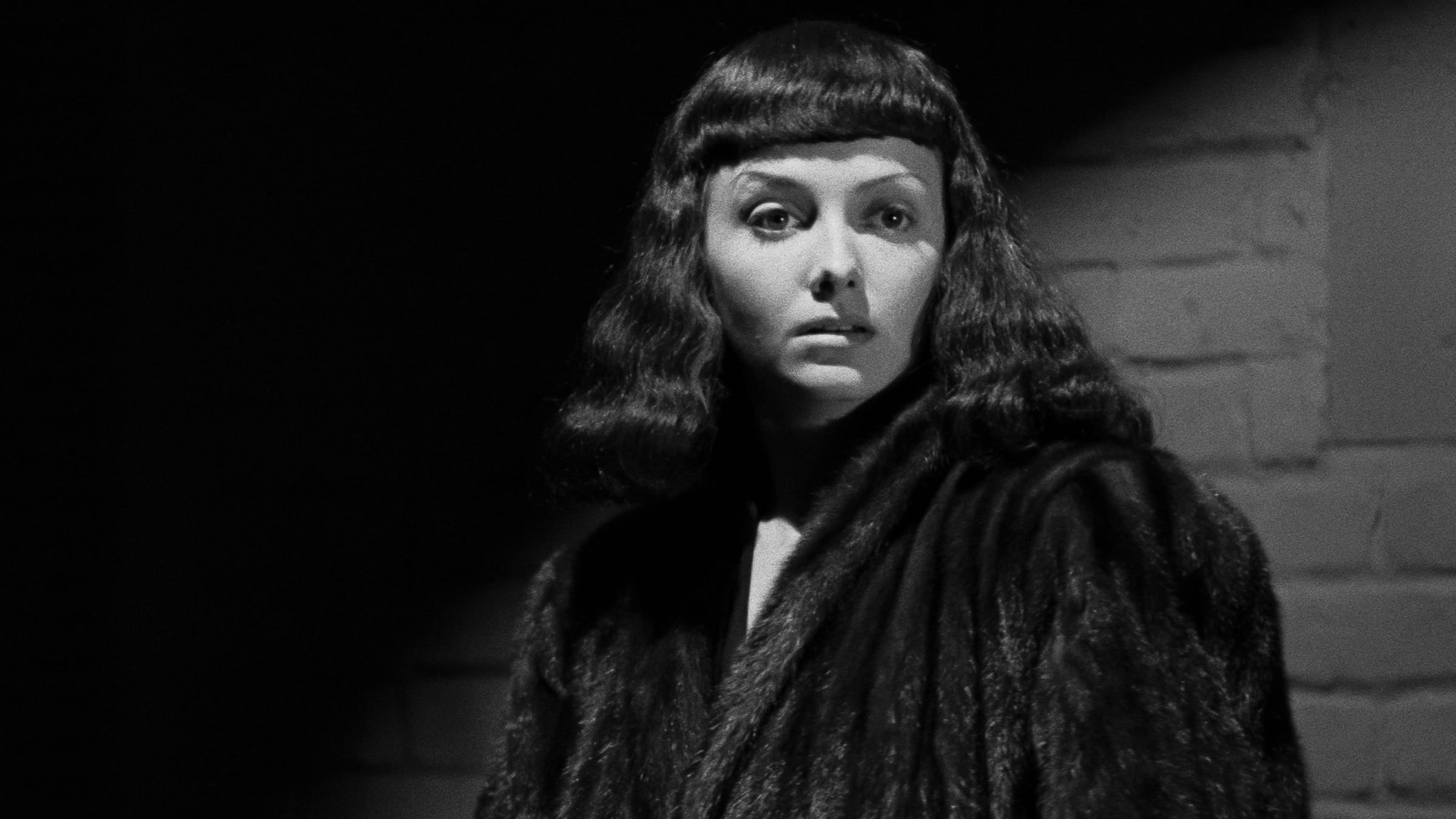RELATED ARTICLE
I Walked with a Zombie: Better Doctors
The Criterion Collection

The Seventh Victim (1943), produced by Val Lewton and directed by Mark Robson, is a delicate, muted, atmospheric horror film that is somehow more than the sum of its parts. A certain devil-may-care approach to consistency and coherence, along with an artful job of back-lot pasteboard illusionism—both things attributable to the strict $150,000 budget cap—actually assists in creating the aura of anxiety and indeterminacy that makes it a horror picture despite the low number of shocks and maybe a teaspoon’s worth of blood. This blend of artistry and happenstance results in a film whose impact seems to bypass the intellect entirely. It might have been even better as a silent—except for the subliminal power of its sound effects.
Kim Hunter, in her first screen role, plays Mary Gibson, graduating from ingenue to romantic lead over the course of the picture while serving as narrative eye and audience proxy. Mary is summoned by the headmistress of her private school—vocal scales and Latin declensions swirl around a massive staircase recognizable from Orson Welles’s The Magnificent Ambersons (1942)—who tells her that her older sister and guardian, Jacqueline, is in serious arrears on Mary’s tuition. Jacqueline has, in fact, disappeared, so Mary sets off to New York City to look for her. She visits Jacqueline’s perfume company, La Sagesse (meaning “wisdom”; in the script, it was La Jeunesse, “youth”), where her subaltern, Mrs. Redi (Mary Newton), informs Mary that she has bought the firm from Jacqueline, and no, she doesn’t know where she is. Mary then goes to Dante, a restaurant in Greenwich Village where her sister has been seen, and discovers that she has rented a room upstairs, which turns out to contain only a chair and a noose.
The Seventh Victim was the fourth film that Lewton produced as the head of the RKO horror unit. Lewton, who had been a reporter and a pulp novelist, was the nephew of the silent-film icon Alla Nazimova, who had helped his mother (her sister) get work as a reader at Metro Studios (later MGM, where she became the head of the story department). Nina in turn introduced her son to David O. Selznick, for whom he worked as researcher, script doctor, and everything in between, until both agreed Lewton should make his own pictures. Poverty Row was perhaps not his preferred destination, but it gave him freedom he could not have had as an A-lister. Lewton’s main competition was Universal’s horror line, which was recycling Frankenstein, Dracula, and the Wolf Man in ever more ridiculous scenarios. Lewton—who micromanaged every detail of his productions, writing the final scripts and overseeing a thousand details, essentially directing his films on paper—was all about suggestion and afterimage. That room, for example, remains lodged in the viewer’s mind even though it is only on-screen for seconds.
His plots, meanwhile, appear as flimsy scaffolding, often hard to keep straight as one watches. Mary meets Jacqueline’s boyfriend (later revealed to be secretly her husband), the admiralty lawyer Gregory Ward (Hugh Beaumont, the future Ward Cleaver on Leave It to Beaver), who doesn’t know anything. She meets the psychiatrist Dr. Judd (Tom Conway, George Sanders’s brother), who thoroughly puts her off (“Dipsomania can be rather sordid”), and no, doesn’t know anything. She hires a detective, Irving August (Lou Lubin), and with him breaks into La Sagesse by night, to see what lies beyond the one locked door, but August is fatally stabbed by the occupant of the room, and Mary runs away. Later, on the subway near Fourteenth Street, she sees three men in evening dress, two of them supporting the third, who appears dead drunk, until Mary sees his face: it is August’s corpse.

